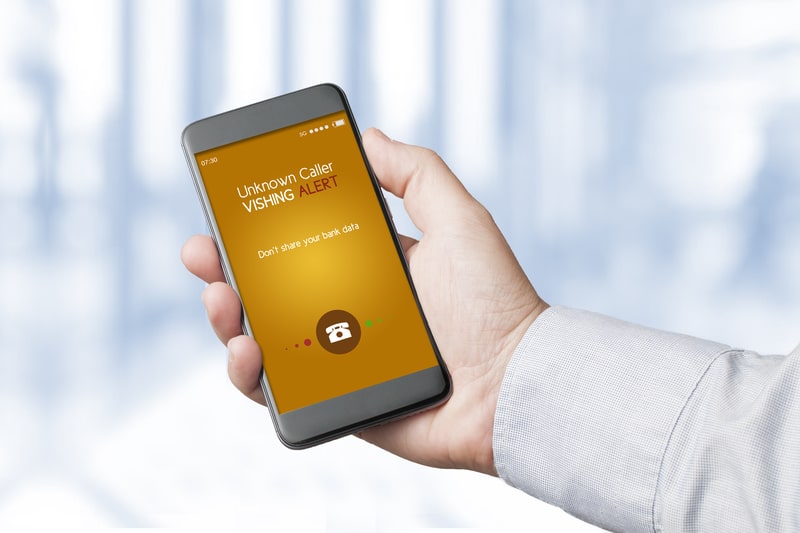Recognizing, Defending, and Staying Informed about Voice Phishing
In this dynamic digital age, technology evolves at a rapid pace, bringing along with it ever-evolving tactics employed by cybercriminals. One threat in this landscape is vishing – short for voice phishing. In this blog post, we’ll explore vishing attacks, understanding what they are, how they target healthcare facilities, and most importantly, how you can protect your organization.
What is Vishing?
Vishing, or voice phishing, is a form of social engineering in which cybercriminals impersonate legitimate entities over phone calls to manipulate individuals into divulging confidential information or taking harmful actions. Attackers often pose as trusted parties, such as colleagues, IT support, or even law enforcement, to establish a sense of credibility and urgency.
Types of Vishing
1. AI-based Vishing:
AI-based vishing involves the use of artificial intelligence to create highly convincing voice recordings or even interactive conversations. Attackers use AI to mimic human speech patterns and inflections, making these vishing attempts difficult to detect as automated.
2. Robocall:
A robocall is an automated phone call that delivers a pre-recorded message to the recipient. These calls can impersonate legitimate organizations or entities, enticing individuals to reveal personal information or take specific actions.
3. VoIP Vishing:
VoIP (Voice over Internet Protocol) vishing involves using internet-based calling services to execute phishing attempts. Attackers exploit these services to imitate genuine calls from banks, government agencies, or other trusted organizations.
4. Caller ID Spoofing:
Caller ID spoofing involves altering the information displayed on the recipient’s caller ID to mask the true origin of the call. Attackers use this technique to display a familiar number, such as a bank’s customer service line, or even a local area phone number, to gain the target’s trust.
5. Tech Support Call:
In a tech support vishing scam, the attacker poses as a tech support representative from a reputable company, claiming that the target’s device has an issue or security threat.
6. Voice Mail Scam:
In a voice mail scam, the attacker leaves a seemingly urgent or important voice mail message prompting the target to call back a specified number.
7. Client Call:
A client call vishing attack involves impersonating a client or customer to deceive employees within an organization.
Common Vishing Scenarios in Healthcare
Healthcare facilities are particularly vulnerable to vishing attacks due to the sensitive nature of patient data and the urgency that often surrounds medical matters. Here are some common vishing scenarios to be aware of:
-
- IT Support Scams:
Attackers pretend to be IT personnel and claim there is a critical issue with the facility’s systems, urging staff to provide login credentials or download malicious software.
- IT Support Scams:
-
- Patient Information Requests:
Impersonating regulatory agencies or insurance providers, Vishers may request sensitive patient information, often under the guise of a compliance audit or insurance verification.
- Patient Information Requests:
-
- Staff or Physician Impersonation:
Criminals might pose as colleagues or physicians, seeking access to patient records or prescription information.
- Staff or Physician Impersonation:
Training your Staff to Recognize Vishing Attempts
The effectiveness of vishing attacks often hinges on employees’ lack of awareness. To protect your facility, consider following staff training initiatives:
-
- Raise Awareness:
Educate your staff about the existence of vishing threats and the potential consequences. Make sure they understand that legitimate organizations typically don’t request sensitive information over the phone.
- Raise Awareness:
-
- Caller Verification:
Encourage employees to verify the identity of callers by asking for their full name, department, and a callback number. Independent verification is crucial.
- Caller Verification:
-
- Avoid Rushed Decisions:
Train staff to resist pressure tactics and to take the time to think critically before sharing any sensitive information.
- Avoid Rushed Decisions:
Implementing Secure Call Handling Procedures
Establishing secure call handling procedures is essential to mitigate vishing risks. Consider the following:
-
- Verification Protocols:
Create a protocol for verifying the legitimacy of callers who request sensitive information or actions.
- Verification Protocols:
-
- Authorization Levels:
Limit access to sensitive information and actions based on employees’ roles and responsibilities.
- Authorization Levels:
-
- Record Keeping:
Maintain records of all calls, especially those involving sensitive matters. This can be helpful for later verification.
- Record Keeping:
Vishing threats in healthcare are very real and they are evolving. By understanding what Vishing is, and knowing common Vishing scenarios, you’re already ahead in the game. It is a great idea to implement secure call handling procedures and train your staff to recognize Vishing attempts. After all, protecting sensitive patient information and maintaining organization operations are top priorities.
Stay informed, vigilant, and safe!
